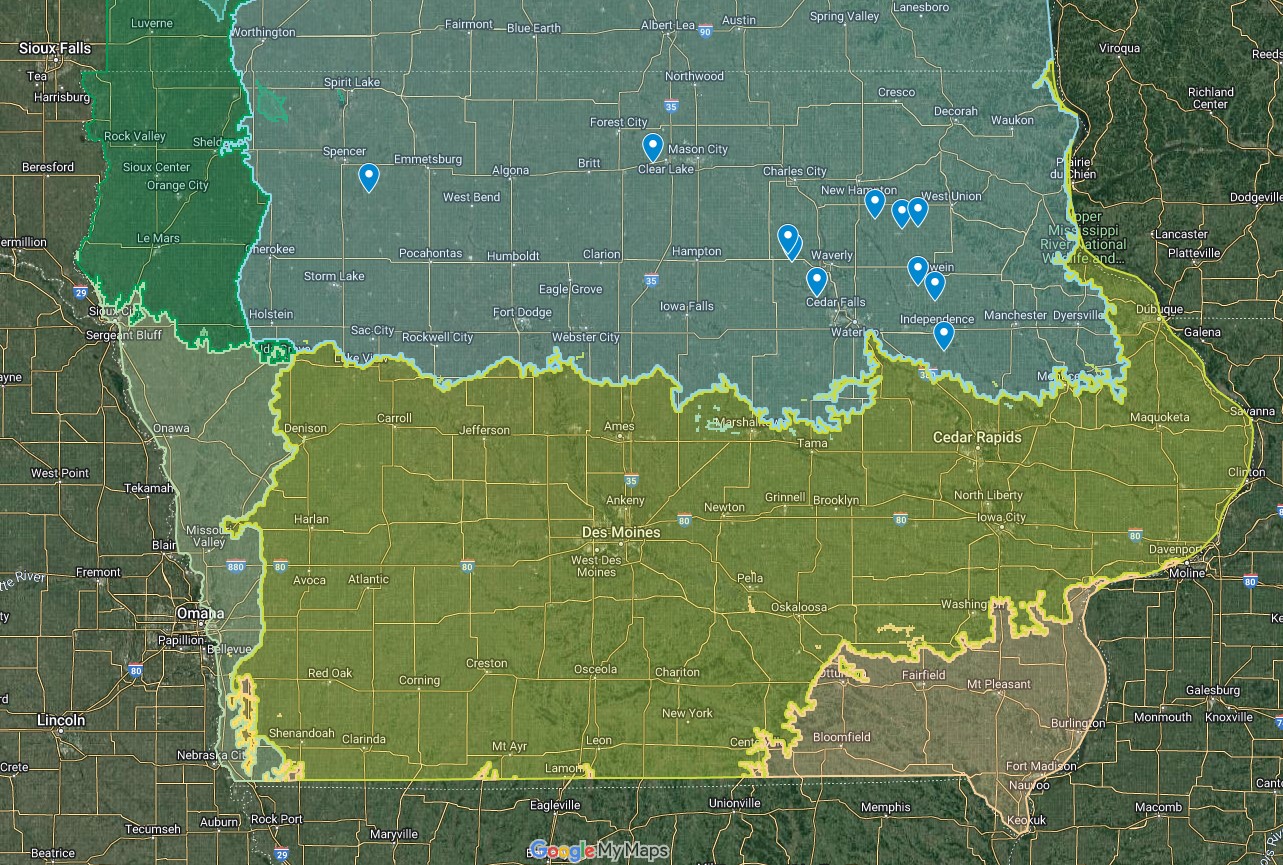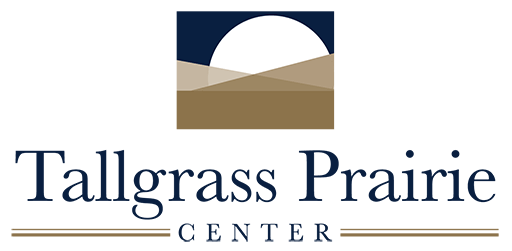Source-ID Seed Development
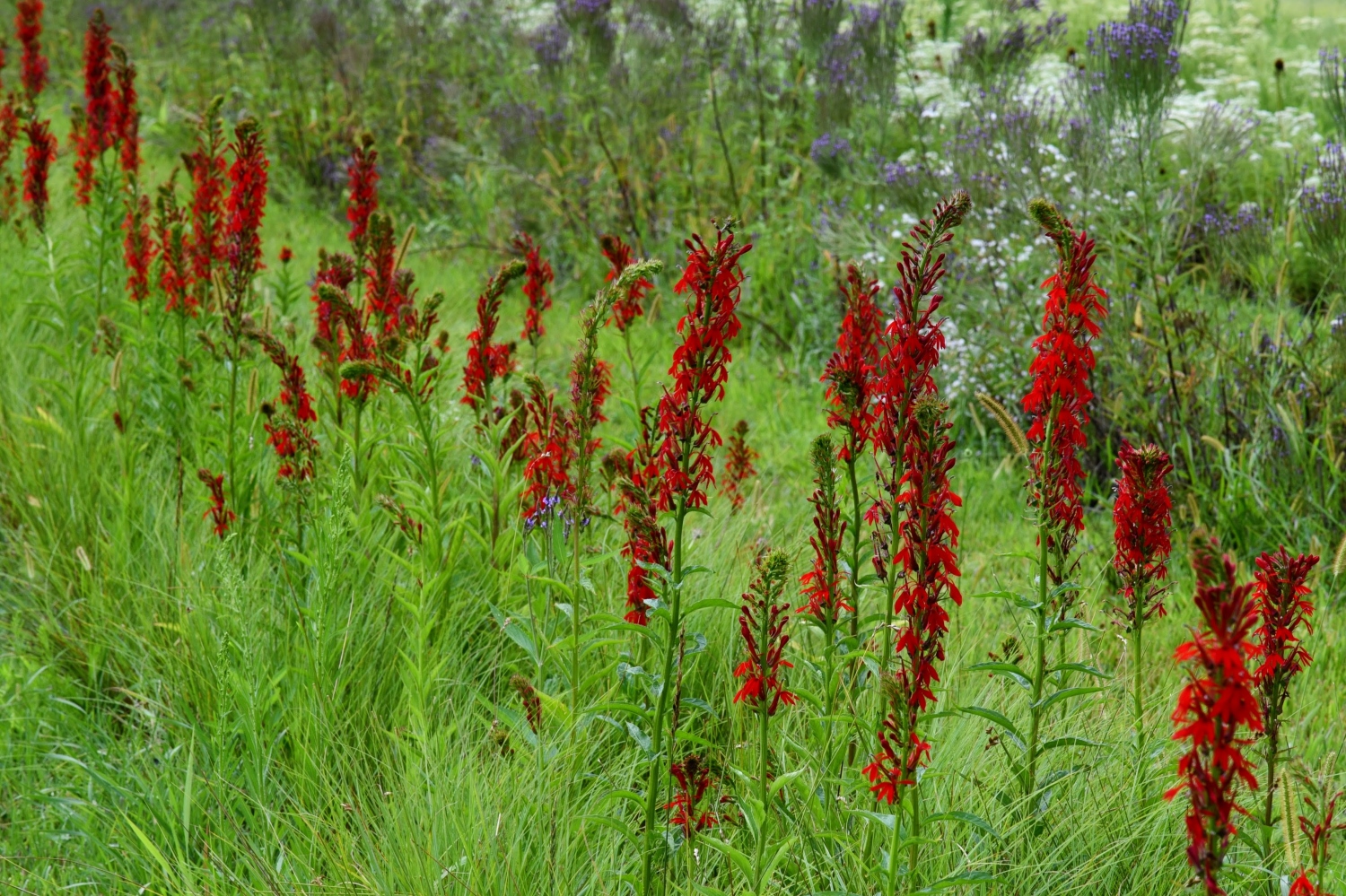
From Remnant Prairies to New Prairie Plantings
The TPC Plant Materials Program provides stock seed, grown at UNI and developed from remnant prairie sources, to native seed growers in Iowa and neighboring counties of surrounding states. This helps ensure that the Iowa DOT, roadside managers, and other people who plant prairie have access to seed with a legacy of adaptation to Iowa's soils and climate and the genetic diversity needed for future adaptation.
Please note: We do NOT sell seed directly to the public. To find seed for your planting project, please visit the TPC's Iowa Seed and Service Provider List.
Steps in Source-ID Seed Production
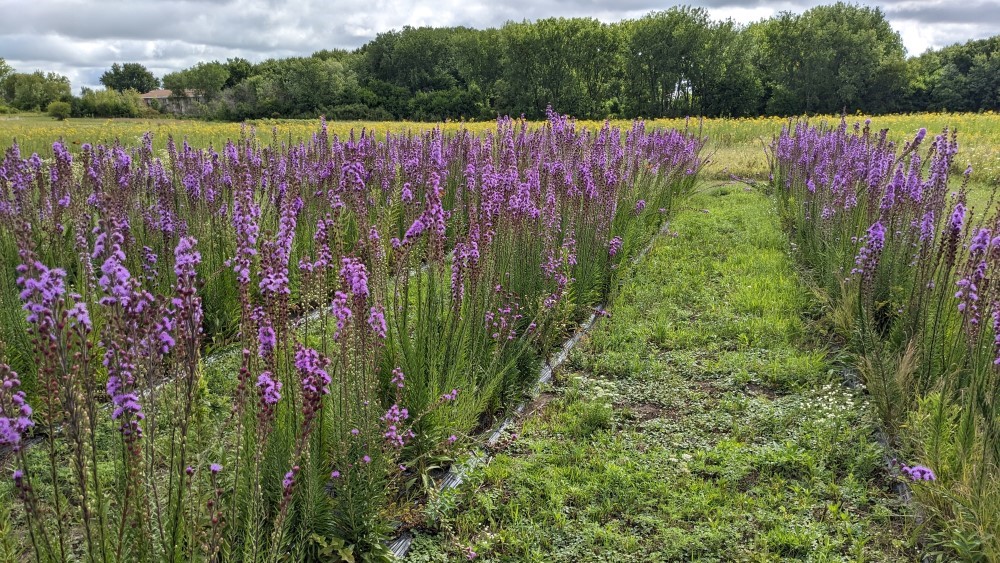
- Step 1: Collecting seed from unplowed remnant prairies
Whenever possible, we follow these guidelines to make genetically diverse collections that should not harm remnant plant populations:
- Develop expertise in identification of target species.
- Collect seed at peak maturity or make repeated collections.
- Collect from 50 or more widely spaced plants across a site.
- Collect up to 30% of the seed from each maternal plant.
- Take a voucher specimen and/or geolocated photographs to confirm the identification.
- Dry, clean, and store seed properly.
- Maintain records on all seed collections.
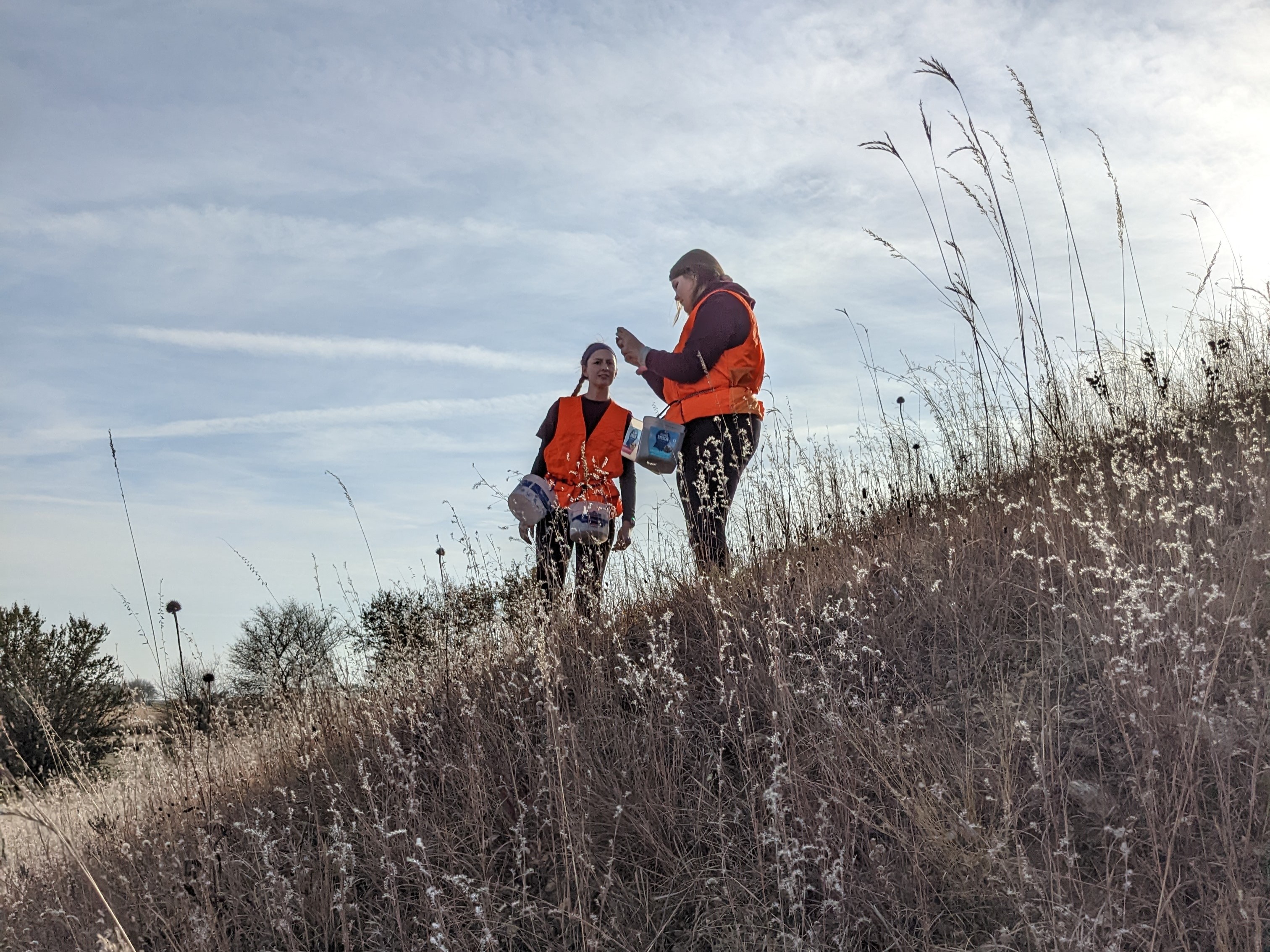
- Step 2: Germinating seed and growing transplants in greenhouse

We use these practices to avoid unintended selection during this crucial step:
- Investigate known strategies for breaking seed dormancy and apply them.
- Carry out small trials to test techniques.
- Start seed from each prairie in a separate germination tray.
- Transplant seedlings into plug flats as they emerge.
- Retain germination trays for first full growing season and add later emerging plants to plugs.
- Maintain good greenhouse hygiene to promote plant health.
- Keep records of practices.
- Step 3: Planting and maintaining production fields
We use the following practices in the field:
- Prepare fields through repeated tillage.
- Lay plastic mulch for weed control in late spring (most plots).
- Transplant about 600 plugs in a typical 150-ft row.
- Aim for roughly equal representation of plants from each prairie.
- Use drip irrigation for wet prairie species.
- Maintain plots with mowing, trimming, and hand weeding.
- Scout frequently for insect pests, diseases, and plant condition.
- Arrange for field inspection for source-identified certification.
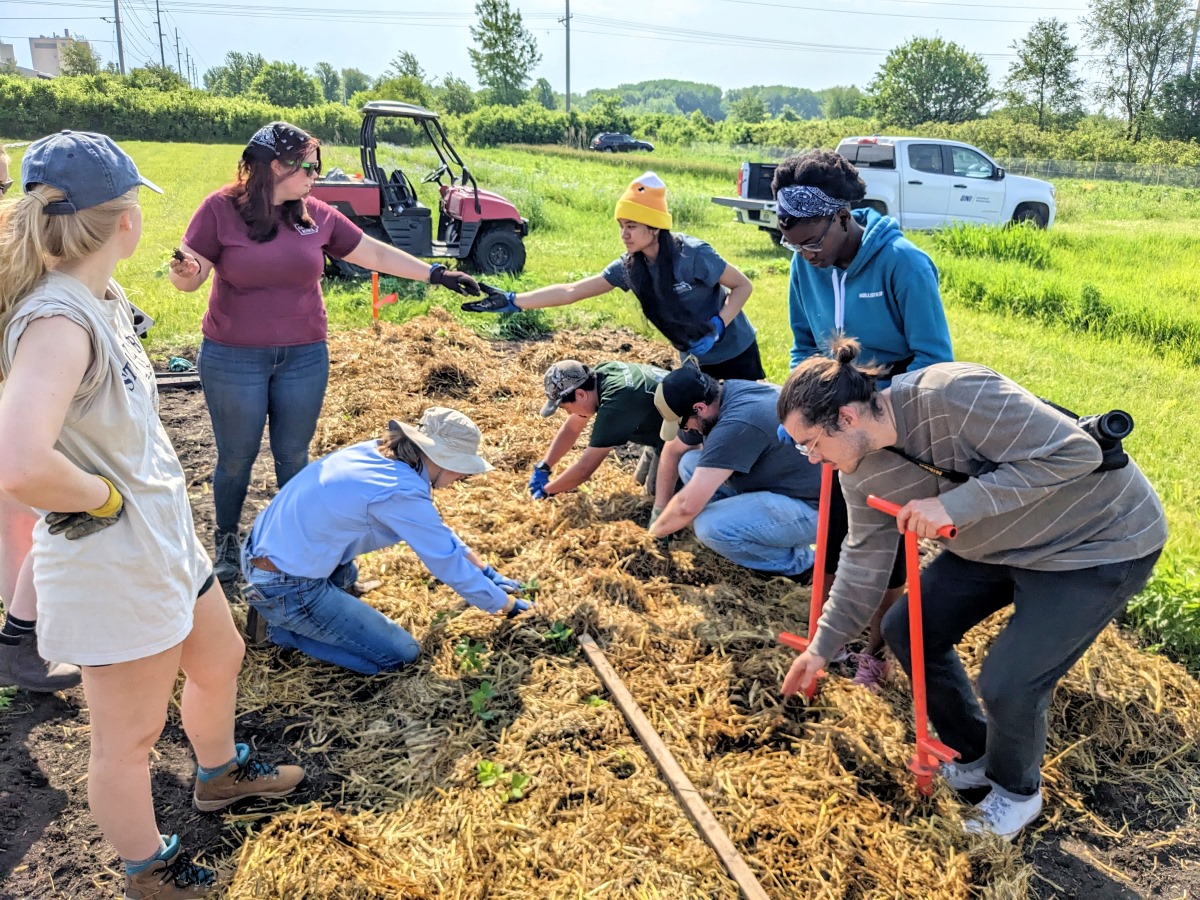
- Step 4: Seed harvest
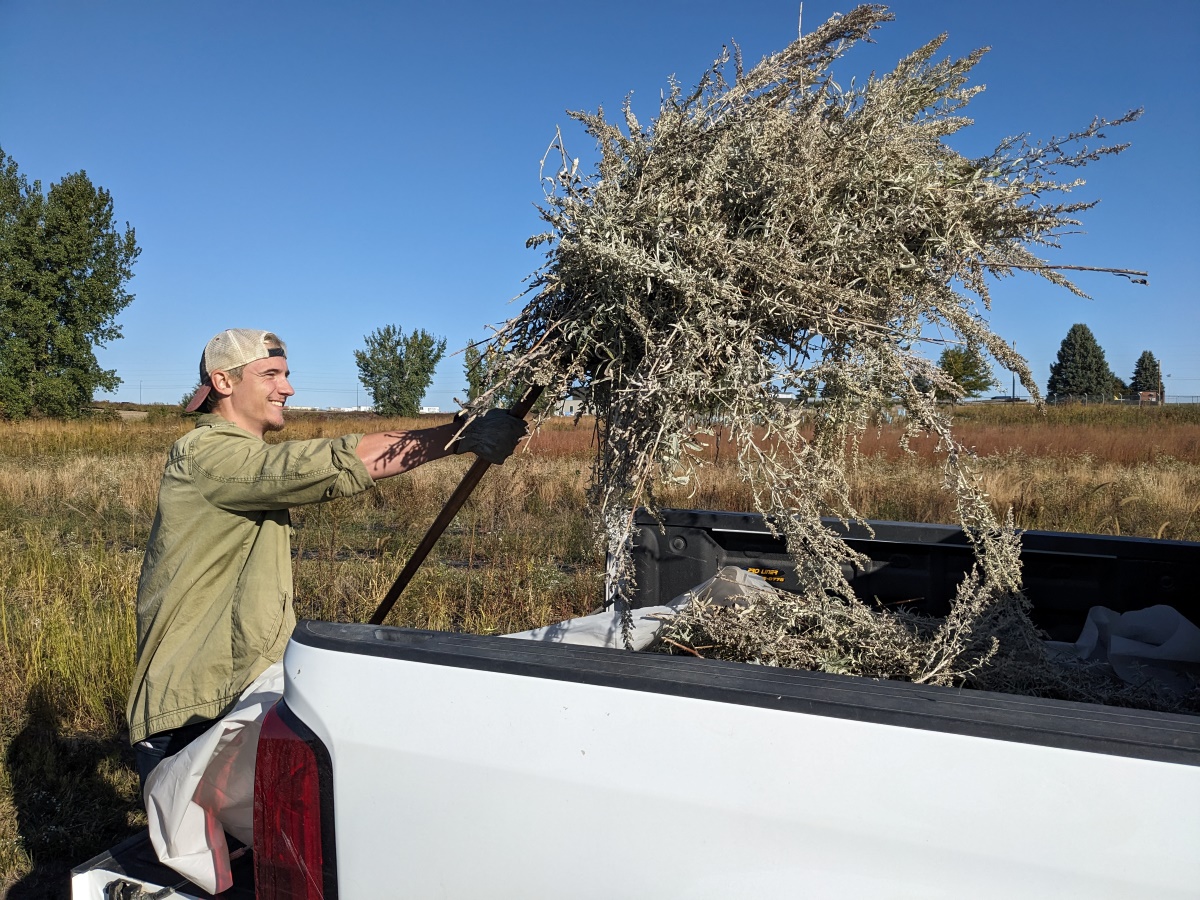
Harvest is a crucial step for avoiding unintended selection. We follow these basic practices:
- Taking care not to exclude from harvest individuals that are atypical in traits such as height or timing of maturation.
- Harvest at peak maturity or repeatedly as the stand matures over time.
- Use mechanical harvesting equipment or hand methods, depending on the species and field conditions.
- Thoroughly air dry harvested material.
- Step 5: Seed processing
We use a variety of methods and equipment to separate seed from other harvested material. To avoid selection at this step while producing pure seed, we:
- Check all outputs of each machine for the presence of filled seed and modify settings to extract that seed and return it to the seed lot.
- Maintain records of seed cleaning settings and adjust to year-to-year differences based on variation in growing conditions.
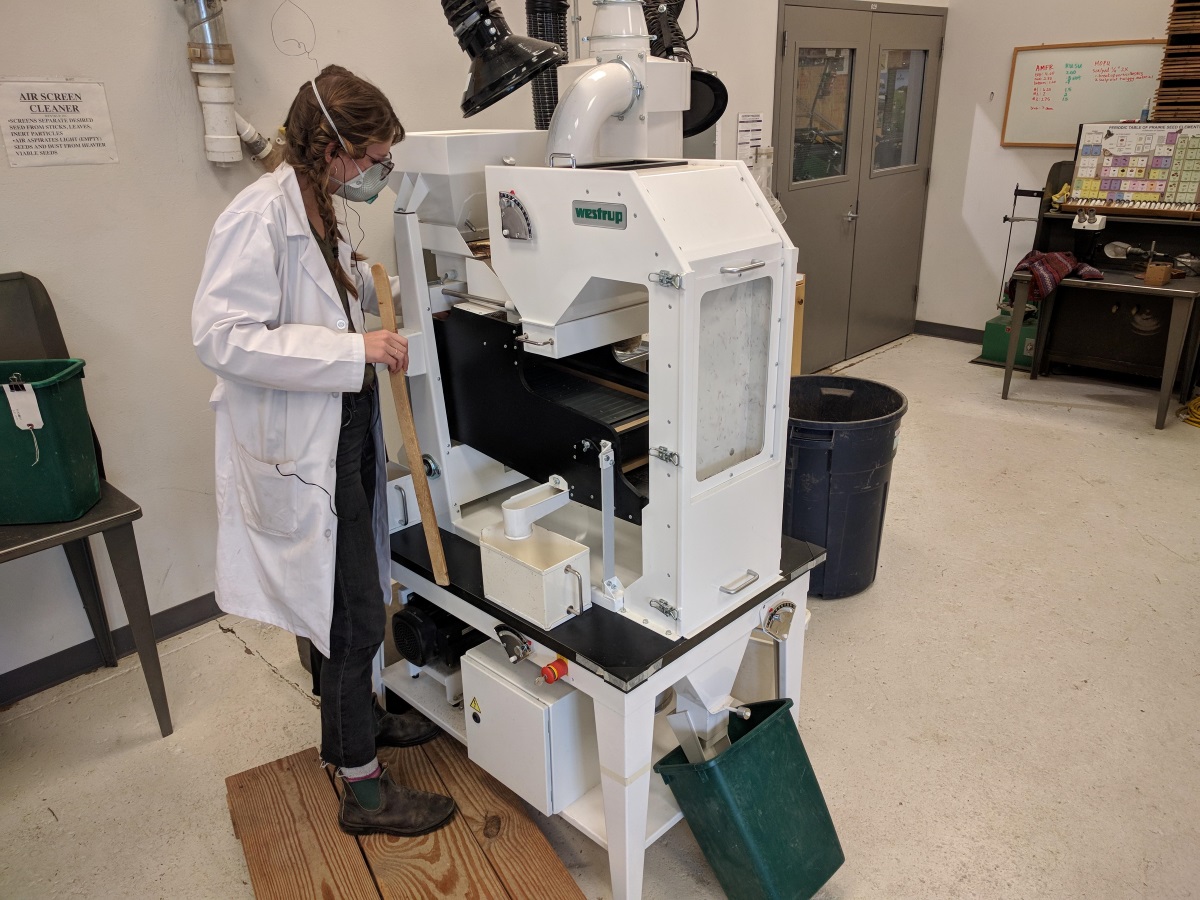
- Step 6: Seed storage
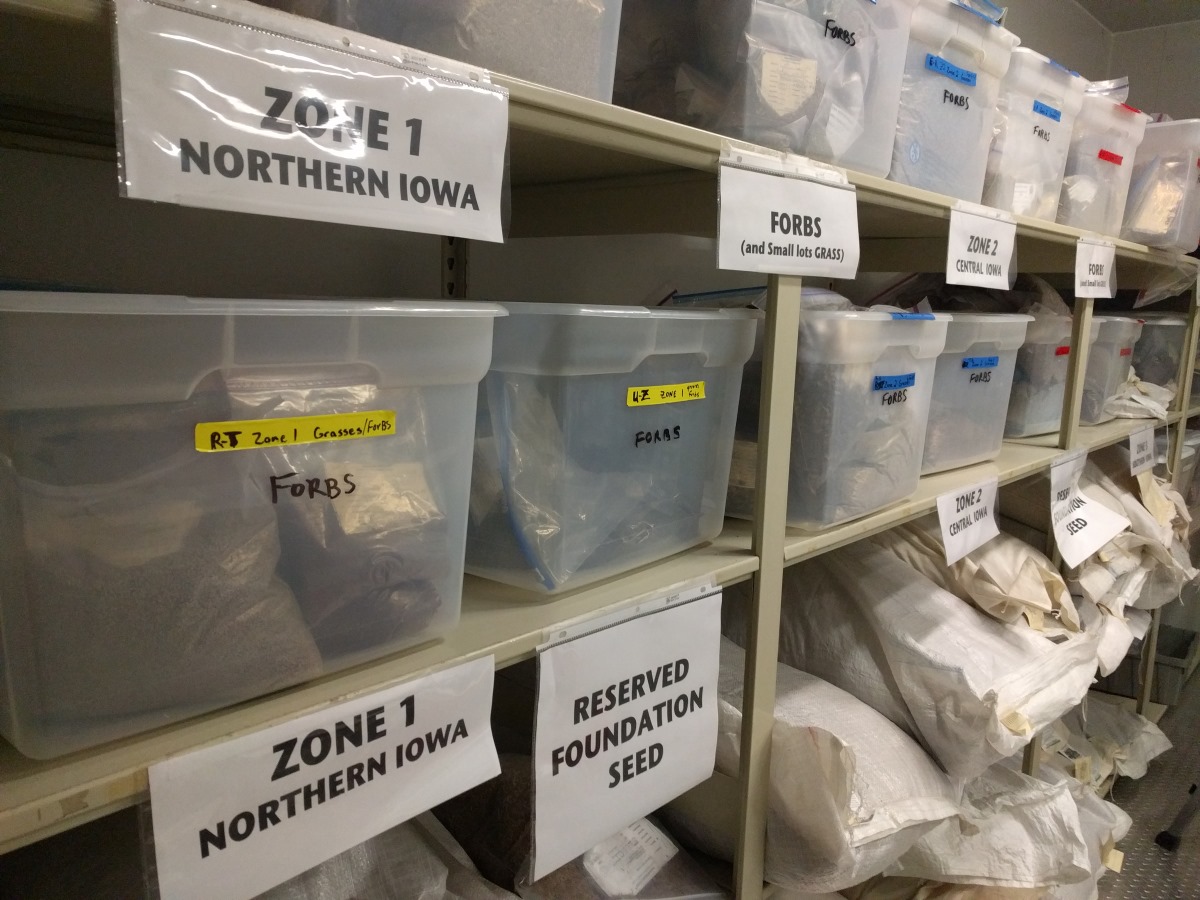
To promote seed longevity, we store cleaned stock seed in a walk-in cooler set at 4 degrees Celsius and 45% relative humidity.
We reserve subsamples from each first generation seed lot (grown from remnant collections) and store them in a freezer at -20 degrees C.
When the stock seed inventory is depleted or declines in viability (determined through seed testing), we use reserved first generation seed to produce a second generation of stock seed.
Yellow Tag, Source-Identified Seed
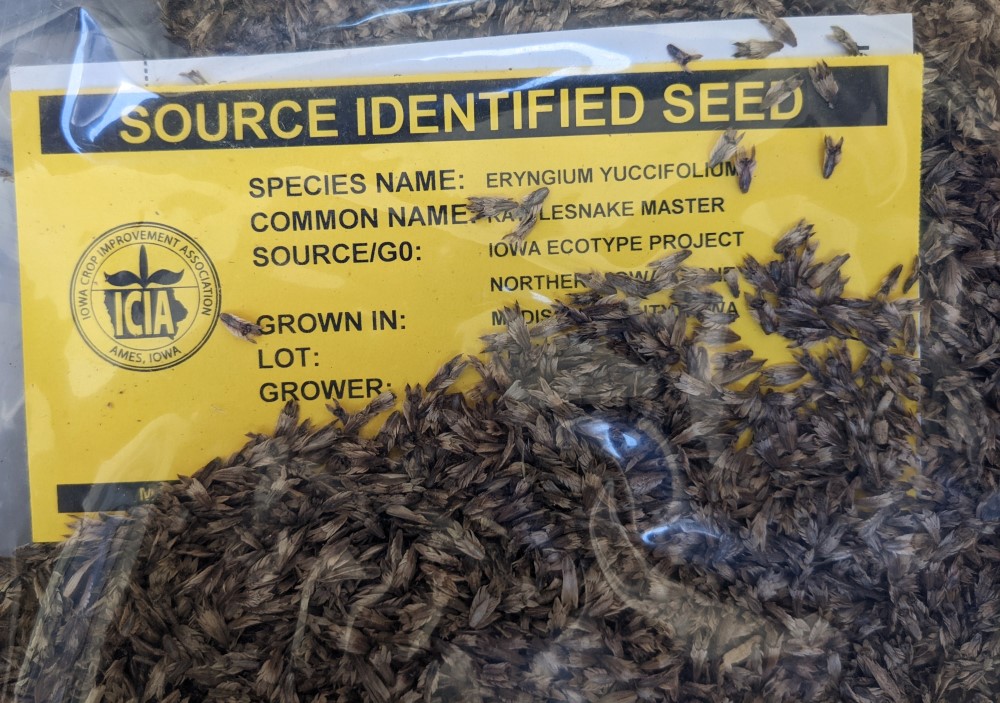
- What is Yellow Tag Seed?
Seed labeled with a yellow tag is certified to originate from natural populations of native plants from an identified source area.
Seed growers who use TPC stock seed to start their production fields are eligible to participate in the certification program for Source-Identified native seed through the Iowa Crop Improvement Association (ICIA). Participating seed growers apply annually for certification, provide records to ICIA, and allow fields to be inspected for species identification, stand quality, and separation distances between zones or between species known to hybridize. Certified Source-Identified seed is labeled with a yellow tag, and you may hear it referred to as "yellow tag seed."
Growers can also make their own seed collections from remnant prairies. When properly documented and certified by ICIA, seeds grown from these collections are also eligible for a yellow tag, however, they are not considered part of the Iowa Ecotype Project (TPC stock seed).
What sets the Iowa Ecotype Project apart is that our stock seed almost always comes from multiple collections across a zone, pooling the genetic diversity from several remnant prairie populations. An average of over 150,000 pounds of yellow tag, Iowa Ecotype Project ("Natural Selections") seed was produced by commercial growers per year from 2007–2015.
The Iowa DOT and Iowa Roadside Management give preference to Iowa Source-Identified "yellow tag" and Iowa Ecotype Project seed in their bidding process for seed used to restore native vegetation on Iowa's roadsides.
The guidelines ICIA uses for Source-Identified certification are set by the Association of Official Seed Certifying Agencies (AOSCA). Each participating state can set specific standards that meet or exceed the AOSCA guidelines.
- Why buy yellow tag, Source-Identified seed?
When you buy yellow tag seed, you know the location or region it's adapted to. This can help you choose the right seed for your project.
For many species, yellow tag seed is competitive in price to non-source-identified seed. When there is difference in price, yellow tag seed is often up to about 15–20% more expensive.
The high diversity of native species available as seed in Iowa is in part due to the over 30-year relationship among native seed growers, Iowa DOT, ICIA's yellow tag program, and the Tallgrass Prairie Center. Customer demand for yellow tag, source-identified seed helps to sustain this important program.
- Where can I find yellow tag, Source-Identified seed?
In the Iowa Prairie Seed and Service Providers list, search for growers who "track origin" and ask them about yellow tag, certified Source-Identified seed.
A list of native seed growers currently participating in Iowa Source-Identified certification is available on the Native Species page of the ICIA website.
If you are purchasing seed as a pre-packaged native seed mix, it is more difficult to trace the genetic source of the individual plant species in your mix. At this point, there is no structure for yellow tag, Source-Identified certification of seed mixes. However, depending on the vendor, a significant proportion of the species in the mix may have been eligible for certification if sold separately. If seed growers and vendors learn that more purchasers are interested in seed source (or 'provenance'), this information may become a more common component of seed labels.
What are Iowa Ecotype Zones?
The Iowa Ecotype Project divided the state into three eco-zones based on latitude. These zones were chosen because differences in temperature and growing season length from north to south are likely to affect the timing (phenology) of plant growth and reproduction as well as their relationships with pollinators. Smaller zones could have been drawn, reflecting Iowa landform regions, however, these were deemed too small to be economical for commercial production of diverse species of seed.
To create an Iowa Ecotype, parent seed is collected from several (preferably >10) remnant prairies within a zone in order to maximize genetic diversity.
Seed sourcing and transfer zones are topics of continuing discussion in the restoration community. See for example: Bower, et al. 2014. Generalized provisional seed zones for native plants. Ecological Adaptations 24(5), pp. 913-919
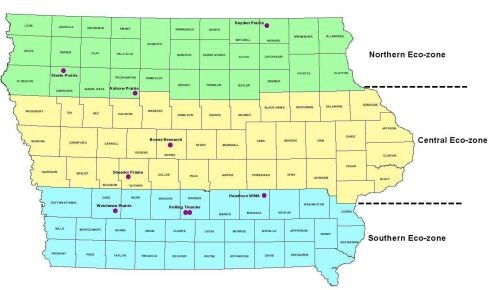
In recent years, the Plant Materials Program has adopted the Provisional Seed Transfer Zones of the US Forest Service to define the boundaries of zones for new "Iowa Ecotypes" in production. This approach divides most of Iowa into two zones, north to south, based on winter minimum temperatures that correspond roughly to latitude. The zones continue across political boundaries, extending into neighboring states. The map below shows locations of the 11 remnant prairies across northern Iowa from which we collected seed of Doellingeria umbellata, parasol whitetop, in 2020 and 2021.
